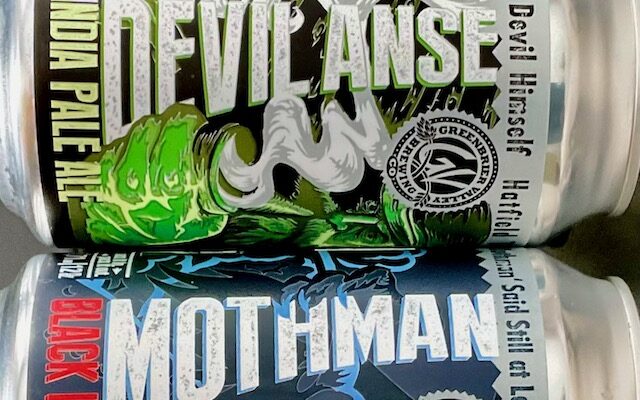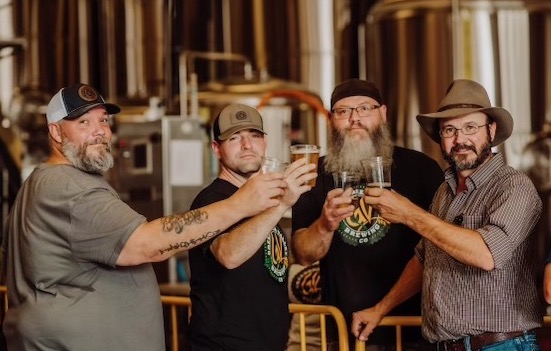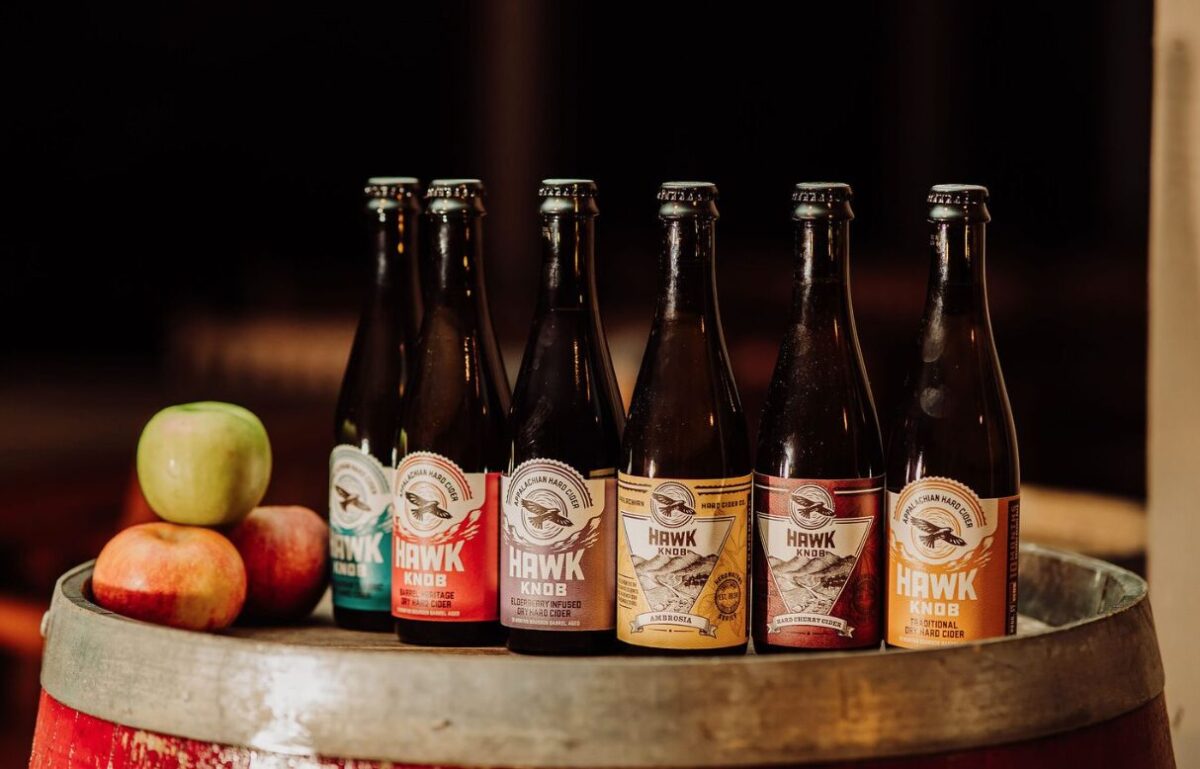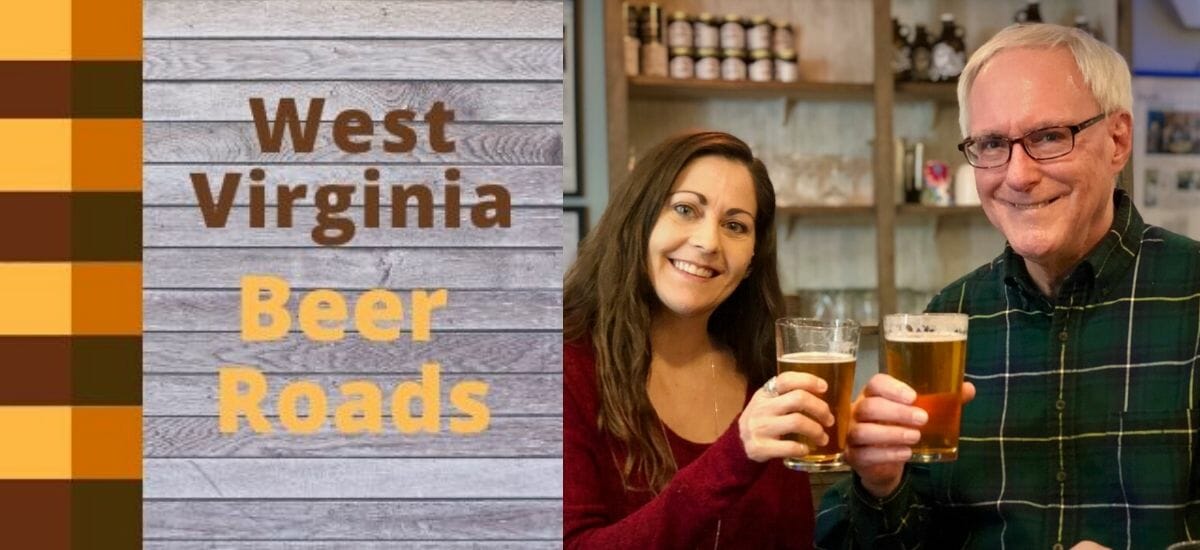
Bennett makes big impact in craft market
January 18, 2024
When it comes to recent moves in West Virginia’s craft cider and beer markets, no one is making a larger business impact than is a man from Greenbrier County named Josh Bennett.
Bennett, who started up the Hawk Knob cidery a decade ago, last summer purchased the assets of Greenbrier Valley Brewing Company (GVBC), the state’s second largest selling brewery, and has restarted its brewing program.
When the former owner shut down the brewery last spring, something tugged at Bennett’s heart. “The thing that weighed on me was the jobs,” he said.
He knew many of the brewery’s employees and didn’t want to see all those folks unemployed. Initially, he didn’t think about actually buying the brewery. He thought its building might be a good place for his cidery to expand in. But then, some sessions with those laid-off employees opened his eyes to the possibility.

While Bennett is a man with a big heart, he’s also a guy with proven good business sense. He doesn’t plan on operating the brewery as a charity. He plans to run a profitable business. After taking charge of the brewery property last summer and bringing back the brewery staff, he is now well on his way to making the changes necessary to turn Greenbrier Valley Brewing into the first-class business venture it always had the potential to be, but in the past, could never quite achieve.
Hear Josh on WV Beer Roads Podcast
On Episode 78 of the West Virginia Beer Roads podcast, Charles and Erin talk with Josh Bennett about how he got started in the cider business and, eventually, the beer business. Listen in as Bennett reveals the twists and turns of his life that have taken him to cidery and brewery ownership.
Caring about tradition
A very important thing, that people who don’t know him don’t recognize, is Bennett’s passion for tradition. A big factor that drove him to open a cidery was his remembrances of traditional Appalachian cider from back in the days of his youth in the Virginia mountains. Then come forward to around a dozen years ago, as he began seeing and sampling the new brands of American hard cider appearing on West Virginia retailers’ shelves. A realization hit him:. “It didn’t taste anything like what I had grown up making,” he says.
He found the big American ciders brands to be a lot sweeter and less complex than the ciders he learned to make growing up. His homemade ciders were barrel fermented and barrel aged, with wild yeast fermentation. They were much more complex and much drier than the contemporary, mass-marketed commercial brands.
Room for Appalachian-style cider
“I figured there must be quite a hole in the market,” he said, and he thought there had to be a lot of folks who would also enjoy traditional Appalachian-style cider. But it wasn’t available for them to try.
And that’s when he got Hawk Knob Hard Cidery going.

In 2014, Hawk Knob cidery began producing traditional Appalachian-style ciders and slowly introduced them to the market. As people tried his ciders, they learned to like them. Yes, they’re quite different from your Angry Orchard and Bold Rock type of brands. They are truly a different style category — one that most U.S. cider drinkers had never had before.

As his Hawk Knob flagship line got itself well established, Bennett saw he could also branch out into other cider categories. So in 2022, he developed his MTN Made series. These ciders were designed to be more approachable to generations growing up on sweet soft drinks and sweeter ciders. But no processed sugars here — he back sweetens MTN Made ciders only with naturally sweet products like apple juice or local sorghum molasses. No shortcuts. And only natural flavorings are added.

Commitment to high quality in brewing too
Last summer Bennett got a few surprises after taking over Greenbrier Valley Brewing. He quickly discovered there had been a good bit of recipe creep in GVBC products through the years. He says that, likely for financial reasons, the brewery had sometimes substituted ingredients, and the recipe ingredients lacked consistency. Bennett felt GVBC’s flagship brands, which at their best competed for the top spot in their style categories among beers from West Virginia brewers, may have sometimes lost their edge.

His experience in Appalachian cider making taught Bennett that adherence to tradition and to using only high quality ingredients was paramount. As one might predict he put a high priority restoring Greenbrier Valley Brewing’s beer to top quality.
Number One: He moved to return the flagship beers to their best recipes. He insisted on using only high quality and proper malts and hops appropriate for the beer style. He restored Devil Anse IPA to the recipe that had made it so beloved. And similar recipe adjustments were made to the other GVBC beers.
With suppliers, he signed up for hop contracts so he could be assured of getting the exact varieties of hops he needed. He banished use of adjuncts and malt extract in beers where their use was not traditional for the style. He made sure all the canned beer was date coded before it left the brewery.
This is just a very brief summary of the things that is moving GVBC brews back to top popularity. To learn many more details, listen to the podcast. Hear Bennett also explain the direction he’s set for GVBC’s future. If you’re a West Virginia craft beer fan, we think you’ll find it a very informative interview.
Bennett asks for your help
It has come to Bennett’s attention that there are still some GVCB beers out in the market that were produced by former GVBC owners and that are now approaching a year or more old. These older beers often do not have a date code on the can.
All new GVBC beers, produced under Bennett’s ownership, have a Born On date code printed on the bottom of the each can. (See photo). These dates will be no older than 09/10/23.

Anyone who spots Greenbrier Valley Brewing beer on retailer shelves without the new date code are asked to contact Bennett or GVBC and report the location. Canned craft beer that is a year or more old will often taste stale, and that is especially true for IPAs and for other low to moderate alcohol content beers.
Bennett wants customers to judge and enjoy his GVCB beers while they are fresh and while the hop flavors are at their peak. So please purchase beer with the newer dates printed on the cans.
Find More Info
Greenbrier Valley Brewing Website
Greenbrier Valley Brewing Facebook Page

